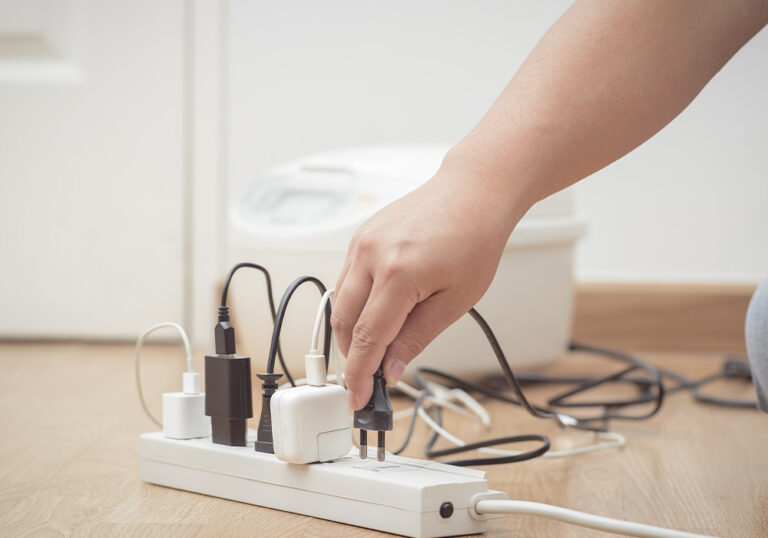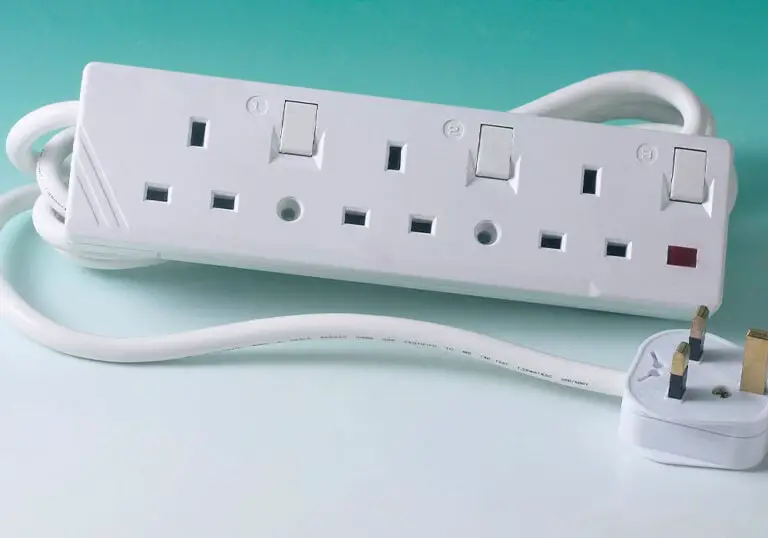How Much Electricity Does a Dishwasher Use?
Dishwashers have become an essential appliance in many households, offering a convenient and efficient way to clean your dishes. While they can save you time and effort, it’s worth considering how much electricity a dishwasher uses, and whether this can have a significant impact on your energy bills.
Understanding the energy consumption of your dishwasher can help you make informed choices about which type of dishwasher to purchase or how often to use it. Factors such as dishwasher size, type, and usage patterns all contribute to its energy use. By comprehending these factors, you can make adjustments to your habits or upgrade your appliance to minimise your overall electricity consumption while maintaining its benefits.
Key Takeaways
- Dishwasher energy consumption depends on the type, size, and usage
- Various factors influence a dishwasher’s energy use, such as its efficiency rating and how it’s operated
- Knowledge of energy consumption can help in choosing the right dishwasher and reducing overall energy usage
Understanding Dishwasher Energy Consumption
When considering the amount of electricity a dishwasher uses, you need to take into account three main factors: the power rating of the dishwasher, the duration of operation, and the frequency of use.
First, find out the power rating of your dishwasher, typically measured in kilowatts (kW). This can usually be found on the appliance’s label or in the user manual. Note that this rating indicates the maximum power consumption of your dishwasher. In reality, the actual power consumption varies depending on the program or cycle you choose. Energy-efficient wash cycles, for example, will have a lower power consumption than more intensive cycles.

Next, consider the duration of operation. Dishwashers typically have several different cycle options, each with their own duration. The total energy consumption during a cycle is the product of the power rating and the time taken by the cycle. For example, if your dishwasher has a power rating of 1.2 kW and the cycle takes 1 hour, it consumes 1.2 kWh of energy.
Here’s a rough approximation of dishwasher energy consumption based on cycle types:
- Eco cycle: 0.8 – 1.2 kWh
- Normal cycle: 1.2 – 1.5 kWh
- Intensive cycle: 1.5 – 2.0 kWh
Finally, think about the frequency of use. If you use your dishwasher daily, the energy consumption will naturally be higher than if you use it less often. To estimate the annual energy consumption of your dishwasher, simply multiply the energy consumption per cycle by the number of times you use the dishwasher in a year.
To minimise the energy consumption of your dishwasher, follow these tips:
- Choose a dishwasher with a high energy efficiency rating (A+, A++ or A+++).
- Use the eco setting when possible, as it consumes less energy than other cycles.
- Run your dishwasher only when it’s completely full to maximise its efficiency.
Remember, considering the power rating, duration, and frequency of use can give you a good understanding of your dishwasher’s energy consumption so you can better manage your electricity usage.
Types of Dishwashers and Their Energy Consumption
When looking at dishwashers and their energy consumption, it’s essential to understand the different types available and how they use energy. Let’s dive into some common dishwasher types and their energy usage.
Freestanding Dishwashers are widely used in households due to their flexibility in installation. They use an average of 1.5 kWh per cycle, with an annual energy consumption of around 200-300 kWh. The efficiency of this type of dishwasher can vary depending on brand, model, and features available.
Integrated Dishwashers are built into your kitchen cabinets for a seamless look. These models generally use between 1.3 and 1.7 kWh per cycle, depending on their size and capacity. The annual energy consumption of integrated dishwashers ranges from 230 to 295 kWh.
Slimline Dishwashers are a great space-saving solution, with a narrower design than standard freestanding or integrated models. This type of dishwasher typically uses less electricity per cycle, consuming around 1.1 to 1.6 kWh. However, the energy consumption per year is typically between 220 and 280 kWh because they have a smaller capacity leading to more frequent usage.
Compact Dishwashers are ideal for small kitchens or single occupants. They consume between 0.6 and 1 kWh per cycle on average. Due to their smaller size, compact dishwashers use less energy annually, with consumption ranging from 130 to 170 kWh.
Drawer Dishwashers come with either a single or double drawer design. Single-drawer models use an average of 1.1 kWh per cycle, while double-drawer models consume about 1.5 kWh per cycle. Although convenient, drawer dishwashers tend to consume more energy per cycle than other types, so the annual energy consumption can be around 260 to 350 kWh depending on usage.
Keep in mind, the energy consumption mentioned above can vary depending on factors such as energy efficiency ratings, size, capacity, and usage. It’s always essential to check the energy label before investing in a dishwasher to ensure you’re choosing an energy-efficient model that meets your needs.
Factors Affecting Dishwashers’ Energy Use
Capacity
The capacity of your dishwasher plays a critical role in determining its energy consumption. Dishwashers with larger capacities can hold more dishes, which may result in reduced water and energy usage per load. However, it is essential to consider your household’s actual dishwashing needs when choosing a dishwasher with a specific capacity.
Energy Efficiency of the Model
The energy efficiency of the dishwasher model is another crucial factor. Some models are designed to consume less energy, thus lowering your electricity bill. Look for dishwashers with either an “A+” or an “A++” energy rating, as they are the most energy-efficient options available. Energy Star-labelled dishwashers are also designed to consume less energy and water, making them an excellent choice for environmentally-conscious users.
Wash Settings
Every dishwasher comes with various wash settings that can affect energy usage. Heavier wash cycles, such as those for pots and pans, consume more energy because they require hotter water and longer cycle times to remove stubborn food remnants. On the other hand, light or eco-friendly wash cycles utilise less energy and water, proving more energy-efficient for lightly soiled dishes. To reduce energy consumption, choose the appropriate wash cycle for each load based on the level of soiling.
Usage Frequency
Lastly, the frequency of your dishwasher usage directly impacts its energy consumption. Naturally, the more often you use your dishwasher, the more energy it will consume. Implementing efficient dishwashing practices, such as running full loads, reduces overall energy usage. If you have a small household or only use a few dishes daily, consider purchasing a compact or countertop dishwasher that uses less energy than a full-sized model.
Calculating Dishwasher’s Energy Consumption
When you want to calculate the energy consumption of your dishwasher, you should first look for its energy rating, usually found on the label. The rating will typically be presented as kWh per year, and this figure represents the approximate annual energy consumption of the appliance.
To calculate the energy consumption per wash, follow these steps:
- Find the energy rating: Look for the energy label on your dishwasher, which will provide the kWh per year.
- Determine the number of washes per year: Estimate the number of times you use your dishwasher each week and multiply by 52 to get the total annual washes.
- Calculate energy consumption per wash: Divide the annual energy consumption (kWh per year) by the number of washes per year.
For example, if your dishwasher has an energy rating of 295 kWh per year and you use it 5 times per week:
- Annual washes = 5 times per week × 52 weeks = 260 washes
- Energy consumption per wash = 295 kWh per year ÷ 260 washes = 1.13 kWh per wash
Keep in mind that this calculation is based on an average usage, and your dishwasher’s energy consumption might vary due to factors such as the wash cycle selected, water temperature, and level of dish loading.
You can also take measures to minimise your dishwasher’s energy consumption. These include:
- Use eco-friendly or low-temperature settings: These settings can help reduce energy usage compared to intensive wash cycles.
- Load your dishwasher efficiently: Ensure that you fill up the dishwasher completely before running it to optimise energy efficiency.
- Air-dry your dishes: If your dishwasher has an air-dry feature, use it to save energy compared to heat-drying.
By understanding and calculating your dishwasher’s energy consumption, you can make informed decisions about its usage and contribute to energy-saving practices in your home.
Ways to Reduce Energy Consumption
Load Dishwasher Correctly
To save energy, it’s essential to load your dishwasher correctly. Make sure you place larger items at the sides and back of the dishwasher so they don’t block water and detergent from reaching the smaller items. Also, try to avoid overloading the dishwasher, as it may require multiple runs, increasing energy consumption.
Choose Energy-Efficient Models
When shopping for a dishwasher, pay attention to the energy rating label. This label indicates the dishwasher’s efficiency, with A+++ being the most efficient. An energy-efficient dishwasher not only consumes less electricity, but it can also save you money on your energy bills in the long term. Additionally, look for dishwashers with features like eco mode, half-load settings, and delayed start options, which can further help in reducing energy consumption.
Maintain Dishwasher Regularly
Regular maintenance of your dishwasher can go a long way in ensuring its energy efficiency. Keep these tips in mind:
- Clean the filter: A clean filter allows water to flow freely and prevents your dishwasher from working harder than necessary. Aim to clean the filter at least once a month.
- Check the spray arms: Blocked spray arms can reduce the cleaning efficiency of your dishwasher. Remove any debris that may have accumulated and ensure the spray holes are free from any blockage.
- Use appropriate detergent: Using the recommended dishwasher detergent and rinse aid ensures that your dishwasher performs optimally, reducing the need for extra washes or high-temperature cycles.
By following these guidelines, you can effectively reduce your dishwasher’s energy consumption and contribute to a more sustainable lifestyle.
How Energy Consumption of a Dishwasher Compares to Other Home Appliances
When considering the energy consumption of home appliances, it’s important to compare their usage to gain a better understanding of where your energy is going. The average dishwasher consumes roughly 1.5 kWh per load for a typical wash cycle. Let’s compare this to other common household appliances.
Your refrigerator is likely the most energy-consuming appliance in your home, using approximately 100-800 kWh per year, depending on its age, size, and efficiency. It runs 24/7, and although its consumption is low in short periods, it adds up over time.
A standard washing machine uses around 1 kWh per load, but this can vary depending on the temperature setting and efficiency. High-efficiency machines use less energy, while hot water cycles require more. Additionally, using a separate tumble dryer can consume between 2-4 kWh per load.
Microwave ovens are surprisingly efficient, using about 1.2 kWh per hour of usage. However, since microwaves are usually used for short periods, their overall energy consumption remains relatively low.
A vacuum cleaner might consume 0.5-1.5 kWh per hour, but again, this depends on the specific model and power settings. Due to its occasional use, the vacuum cleaner doesn’t add significant energy consumption to your bill.
In comparison to these appliances, the energy consumption of your dishwasher is moderately high, but it can be managed with responsible and efficient usage. Some ways to achieve this include running the dishwasher at full capacity, using the eco-setting, and opting for a cold water connection.
Remember, the energy consumption of each appliance is only one aspect to consider when looking at your overall energy usage. By understanding how various appliances stack up against each other, you can make informed decisions on energy-saving habits and appliance upgrades.






